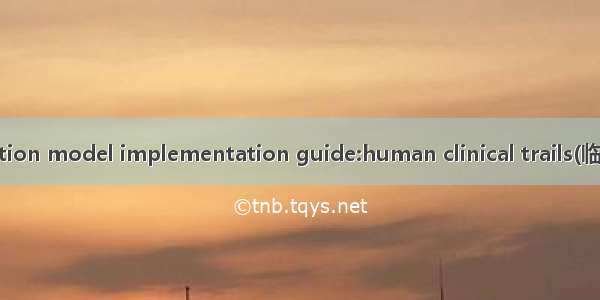
Fundamental of the SDTM(SDTM原理)
observations and variables(观察结果与变量)
SDTM build by observations and variables, each observation can be describe by series of variables,each variable can be classified according to type of information conveyed by the variable about each distinct observation.(SDTM是由观察结果与变量构成,每一个观察结果可以通过一系列结果来描述,每一个变量可以通过每个清晰的观察值所传递的不同的信息进行分类)variables can by classified into 5 major roles identifier variables, identify the study、subject、domain、and sequence number of the record识别类的variables,例如studyid subject id 这些数字记录topic variables,which specify the focus of the observation,eg the name of a lab test话题variables,观察的重点timing variables,which describe the timing of the observation,eg start date and end date时间variables,描述观察结果的时间点qualifier variables,which include additional illustrative text or numeric values that describe the result or additional traits of the observation(units,descripive adj)修饰语variables,进一步描述结果的记录,使用文字或数字rule variables.which describe the condition to start,end,branch,or loop in the trial design model.规则variables,去表述开始、结束、循环、分流等方法 qualifier variables can be further categorized into 5 subclasses grouping qualifiers-对同一域中的数据进行分组result qualifiers-in finding datasets,在发现数据集中,用来描述结果的特定结果,回答了关于topic variable 所表达的问题synonym qualifiers-同义词修饰语,指定了观测记录中某一特定变量的其他可用名称record qualifiers-记录水平定义某一观测的附加属性variable qualifiers -进一步修饰和描述某一观测的特定变量,只能结合他的所修饰的变量使用才有意义(进一步的细分result qualifier)datasets and domain(数据集和域)
domain(域) defined as a collection of logically related obsevations with a common topic.(共同主题并且逻辑相关的观测结果的合集)each domain is represented by single dataset(每一个域都有相对应的数据集)each domain-dataset is distinguished by a unique,2-character code(每个域都是由两个英文字母组成的代码进行区分)the general observation class通用观测数据类别)
subject-level observation collected3 SDTM general observation classes intervention class investigational/ 调查研究therapeutic/治疗other treatments/其他治疗 events class protocol milestone finding class observation resulting from planned evaluation to address specific tests or questions/针对特定问题测试计划的评估结果datasets other than general observation class domains(其他通用观测数据类别)
special- purpose:domain datasets with subject-level data that do not conform to 1 of the 3 general observation classetrial design model(TDM)datasetsrelationship datasetsstudy reference datasets include device identifiers(DI) and non-host organism identifiers(OI)the SDTM standard domain models(SDTM 标准域模型)
general rules apply when determining which variables to include in domain the identifier variables,required in all domains based on the general observation classes基于通用观测数据类别的所有域中是必须的any timing variables are permissible for use in any submission dataset based on a general observation calss相关时间变量可被允许使用在基于通用观测数据类别的域数据集中any additional qualifier variables from the same general observation class may be added to a domain model except where restricted by specific domain assumptions除特定域特定限制外,同一观测数据类别的任意修饰变量可以被添加到该域模型中sponsors may not add any variables other than those described in the preceding 3 bullets 不可以添加的三种standard variables must not be renamed or modified for novel usage.标准变量不准被重新命名a permissible variables should be used in an SDTM datasets wherever appropriate.允许变量在sdtm中使用creating a new domain(创建一个自定义的域)
must based on 1 of 3 sdtm general observation classes custom domain 被创建在现有标准域不能满足需求且数据有本质的不同不能应用于现有标准域中时候 建立一个共同主题的域不要基于时间将域拆分不能基于采集的数据如何使用来创建自定义新域CRF单独模块或页采集的数据可以对应一个现有的域有必要反应等级数据关系 check the SDTM draft domains area of the cdisc wiki for proposed domain developed since the last published version of the SDTMIG 看一下最新的ig里面有没有这些变量look for an existing,relevant domain model to serve as a prototype 寻找一个现有的去做参考submitting data in standard format(提交标准格式的数据)
standard metadata for dataset contents and attibutes(标准元数据以及数据集内容)
metadata attributes should be include in a define-xml document, in addition,the cdisc domain model incude 2 shaded columns that are not sent to the FDA, but which assist sponsors in preparing their datasets 2个灰色columns 不用提交给FDA,元数据属性是最常用数据域的标准描述,一般存在于define.xml文件中
useing the cdisc domain models in regulatory submissions - dataset matedata 用CDISC 域模型递交数据集元数据
the define-xml document that accompanies a submission should also describe each sataset that is inculded in the submission and describe the natural key structure of each dataset。在申报的时候与数据一起提交的define-xml文档,描述了每个数据集的基本属性以及其关键结构dataset-level metadata
include dataset 、description 、class 、structure、 purpose 、keys and location
primary keys
a sponsor might submit as variables that comprise the primary key for SDTM datasets 显示在表中key栏里面 哪些名字是作为那个dataset 里面的primary keys
natural key is a set of data that uniquely indentifies that entity and distinguishes it from any other row in the table 自然主键已经存在,用来唯一标识每一个实体数据行的某一行或多列surrogate key is a single-part,artificially established identifier for a record代替主键,用于记录,单方面人为设置的记录标识符,通过衍生数据而来
cdisc submission value-level metadata
递交数据-数据值水平元数据,垂直结构,每行代表一条观测值,V3.x数据结构
conformance 一致性
遵守数据域完整的元数据结构尽可能遵守SDTMIG于模型尽可能遵守使用SDTM 确定的标准域名称和前缀使用SDTM 标准变量名称在所有标准域中使用SDTM 规定的变量标签对所有变量使用SDTM 规定的数据类型受控术语及或有关的变量数量所有标准域中,包括所有必须变量与预期变量,并确保必须变量不为空确保数据集中的每条记录包含有适合的标识变量。时间变量以及主题变量遵守cdisc注释列assumption for domain model 域模型假设
general domain assumptions 基本域假设
SDTM core designations(核心变量)
three categories are specified in the core column in the domain models;
required variable,必须变量用于识别数据记录最基础的变量,或必要变量,必须存在于数据集中expected variable,期望变量在某个域中此变量是必须的permissible variable,许可变量,当该变量对应的信息是收集或衍生的,可根据实际情况运用
splitting domain
may choose to split a domain of topically related information into physically separate datasets,根据信息的相关性将某些域拆分成多个独立的数据集
splitting domain followed two ways
a domain based on a general observation class may be split according to values in – CAT,when a domain is split on --CAT, --CATmust not be null(基于通用观测结果类别的域,可根据变量–cat的值进行拆分,变量不能为空)the funding about domain may altematively be split based on the domain of the value in --obj
(对于发现相关域可以根据–obj去进行拆分)
some rule must be adhered to when splitting a domain into separated datasets to ensure they can be appended back in to 1 domain dataset(拆分规则,确保可以拆分以及重新合并) 在拆分的数据集中,domain必须保持一致. 在拆分之前确保他们肯定是唯一一个值,在不同数据集中domain必须是一致的在所有需要域浅醉的变量,必须使用domain的值作为前缀再被拆分的不同数据集集中,同一个同一个usubjid中的变量—seq的值必须是不同的,例如 if there are 1000 records for usubjid across the separated,all 1000 records need unique values for --seq,1000条在usubjid 被拆分,那么所有的1000个记录都有自己的单独的unique --seq value当关联数据集从原本的数据集连接的时候,idvar 通常被称为–seq,当不是seq的时候,要确保主记录里面的变量值是不同的,这样使子记录可以正确的回溯主记录许可变量可能只存在于某一个拆分的数据集中,而不是所有的拆分的数据集名称长度最多为4位英文字符suppdatasets 也可以被拆分in relrec,如果定义的数据集水平关系是存在于finding about domain里面且需要被拆分,那么变量rdomain 可能包含4位英文字符的数据集名称根据拆分指南进行拆分(IG上面有地址)
assigning natural keys in the metadata(在元数据中自然分配主键)
how to define natural keys
musculoskeletal system finding(MK) domain examplesupp qualifier variable might also contribute to the natural key of a record 补充变量也可以是一条观测的自然主键
general variable assumprions(一般变量假设)
variable-naming conventions 变量命名规则
values of --testcd must be limited to 8 chara and connot start with a number,also not contain chara other than letters、numbers or 下划线values of other ‘CD’ variable are not subject to the same restriction as testcd,其他带cd的变量值不需要遵守testcd的相同的规定 ETCD 和TSPARMCD 的值要在8个字符以内,但没有其他字符的限制ARMCD 长度需要20个字符以内没有特殊字符的限制Two -character domain identifier
in order to min the risk of difficulty when mergeing/joining domain for reporting purpose 为了将合并或者连接多个域时候出现的风险问题降到最低,用 two-character 去作为前缀
not include:
1.必须的标识变量 studyid domain usubjid
2. 通常用于分组和合并的主键,以及试验设计中的一些变量
3. demographic 中的所有变量除了DMDTC 和 DMDY
4. RELREC and SUPPQUAI 中的变量以及 comments and trail design datasets 中的一些变量
use of subject and usubjid 受试者和usubjid 使用
usubjid 唯一受试者id 是唯一的,只有一个
text case in submitted data
建议使用大写
convention for missing values 处理缺失值
missing values for individual data item should be represented by nulls
单个缺失值为空
grouping variables and categorization 分组变量和分类
grouping variables are identifiers and qualifers variables(–cat,–scat) that group records in the SDTM domains/datasets and can be assigned by sponsors to classify 分组变量是标识符和修饰变量,将SDTM域和数据集中的观测进行分组
how grouping variables group data 分组变量如何将数据分组
all records with the same USUBJID value are a group of records that describe that subject,所有相同的usubjid值都是描述该受试者的记录
across subjects(with different usubjid values) 在受试者之间不同的usubjidsame studyid value are a group of records that describe that studysame domain value are a group of records that describe that domain–cat 和–scat 可以进一步进行细分分类
**within subjects(record with the same usubjid values)**在受试者之间,usubjid 相同 GRPID values futher group records within usubjid,all records in the same domain withe the same 在同一个usubjid 中 grpid 可以对其进行分组
–LNKID 和 lnkgrpLNKID 分组标识符,用于最初结果的记录,针对usubjid的一个分组特征LNKGRP分组标识符,用于在一个域中表示一组评估结果两个都是表示不同域中连接记录的值
multiple values for a variable
if multiple values are reported for an intervention or event topic variable,will split the value into multiple records or otherwise reslove the multiple perif multiple result values (–orres) are reported for a test in a finding class dataset,multiple records should be submitted for that -testcdif multiple values exist ,then the value for the qualifier variable should be ‘MULTIPL’ and SUPP–should be used to store the individual responsesif multiple values(–val) are reported for a standard variable AERRL and AEACN will have no indication that they pertain to abcicinvariable length 变量长度
the maximum length of 200 character variable
除非必要最好不要超过200应该考虑数据的本质,并为变量提供合理预计合适的长度
coding and contolled terminology assumptions(编程与控制语言假设)
contolled terminology 有一个网址
controlled terms,codelist or format column(控制组类,codelist 或者是column格式)
contolled terminology followed 4 ways
1.a single asterisk when cdisc controlled terminology is not currently available but the SDS expect or the CDISC CT team may develop CT in future 当没有具体的ct变量时候用*代替
2. the single applicable value for the avaliable DOMAIN. 单独的实用价值对于可用的domain可用
3. the name of CDISC codelist,represented as a hyperllink in parentheses
codelist名称用圆括号括住’(NY)’
4. a short reference to an external terminology 外来术语简单引用
controlled terminology text case 受控语言的文本类型
see text case in submitted data
controlled terminology values 受控语言的值
null value should not be include the permissible value setpermissible value set 中不允许有空值a null value is implied for any list of controlled erms unless the variable is ‘required’
required value 中受控语言是可以有空值存在的
当domain 或者datasets中包含代码列表中,每个值可能是计划的数据收集的一部分,只有计划数据中的一部分值应该包含在definition-xml文档中
use of controlled terminology and arbitary number codes
ct or human-readable text should be used instead of arbitary number code in order to reduceambiguity for submission reviewers,使用特定数字代码以减少歧义
storing controlled terminology for synonym qualifier variable 为受控语句储存同义修饰词
for events such as adverse events and medical,with the dictionary‘s preferre term or body system name. if a dictionary is multi-axial,the value represent the system organ class used for the sponsor’s analysis and summary tablesif MedDRA is used to code events, the intermediate levels in the MedDRA hierachy should also be represented in the dataset.如果使用MedDRA字典对事件进行编码,则层级结构中的中间级别也应在数据集中表示for concomitant medication,populateCMDECOD with the drug’s generic name and populate CMCLAS with the drug class used for the sponsor’s analysis and summary tables,对于合并用药中,应该根据申办方的分析总结列表中的需求,以药物通用名填充CMDECOD,以药物类别填充CMCLASfor concomitant medication,supplemental qualifiers may be used to represent additional coding dictionary information
在合并用药时候,可以使用补充类修饰语
storing topic variables for general domain models(为一般观测域模型储存主变量)
intervention and events general observation-class model id usually stored as verbatim text 干涉类和事件类 一般以本名储存for funding domain,the topic variable --TESTCD should us controlled terminology,and if CDISC CT exist,should be useuse of yes or no value
variable where response answer should normally be populated for y or n
responses
actual and relative time assumptions(实际与相关时间假设)
formats for data/time variables 时间、日期变量的格式
ISO8601 format
data/time precision 时间日期的精度
精度在时间日期的分组中推断,缺失部分可以用有阶段或连字符表示,如果完全缺失,则时间字段在SDTM中应该为空
年份用四位数字表示
其他用两位
intervals of time and use of duration for dur variables 时间间隔和持续时间变量dur variable的使用
intervals of time and use of duration
interval of time is the part of a time axis,limited 2 time’instants’ such as the times represented in sdtm by the variables–stdtc and endtc, 时间间隔是时间轴的一部分,受两个时间节点的限制,相减 但是不需要放入提交数据库中DRU-variablepnYnMnDTnHnMnS or pnW
p 表示持续时间的字母数字文本字符串之前n 表示正数或零w 用作周指示符
interval with uncertainty 不确定时间区间
when interval of time is an amount of time following an event whose start data/time is recordedYYYY-MM-DDThh:mm:ss(开始时间)/PnYnMnDTnHnMnS(持续时间)
when an interval of tiime is an amount of time measured prior to an event whose start date/time is recorded
PnYnMnDTnHnMnS(持续时间)/YYYY-MM-DDThh:mm:ss(j结束时间)
use of the study day variables 使用study day 变量
the permissible study day variables(–DY/–STDY/–ENDY) describe the relative day of the observation starting with the reference date as day 1;study day 变量从参考日期开始的观察的相对日期the subject reference start date(RFSTDTC) is designated as study day1. the study day value is incremented by 1 for each following RFSTDTC
--DY=(date portion of --DTC)-(date portion of RFSTDTC)+1 if --DTC is on or after RFSTDTCDY=(date portion of --DTC)-(date portion of RFSTDTC) if --DTC precedes RFSTDTCthis method should be used across all domain
clinical encounters and visits
all domain based on the 3 general observation classes shoule have at least 1 timing variable(events、intervention、findings)(–DTC,–STDTC)(VISITNUM,VISIT,VISITDY)sponsor practices for populating visit variables for unplanned visits may vary 不同的sponsor的方法可能不同use of relative timing variables
–STRF and --ENRF识别sponsor的开始和结束时间
–STRF is used to identity the start of an observation relative to the sponsor-defined–ENRFis used to identity the end of an observation relative to the sponsor defined
– STRTPT, --STTPT,–ENRTPT and --ENTPTSTRTPT/ENRTPT 包含类似STRF和ENRF 类似的值,并且可以给定任何时间的描述STTPT和ENTPT变量中表示的时间日期值,并且不限于研究参考期
date and time reported in a domain based on findings 发现域日期和时间
when the date/time of collection is reported in any domain,the date/time should go into the --DTC field, for any domain based on the findings general observation class 在finding域中对于时间日期的收集 放在–DTC中
–STDTC不用于区间内采集日期
use of dates as result variables 使用日期作为结果变量
consider the following cases
calculated due datedate of last day on the jobdate of high school graduation
representing time points
time points can be represented using the time point variables(时间节点变量)*–TPT, --TPTNUM,–ELTMtime point anchors --TPTREF(text description) and --RFTDTC(the date/time)(时间锚点变量)time-point usually have an associate–DTC
在域、访视、参照时间节点的唯一情况下,--TPT 和--TPTNUM 之间的值必须是一对一对应的在定义时间点唯一性的情境性,大多数--TPT 和--ELTM值之间可能存在一对一的关系,--ELTM 只能填充ISO 8601时间段
disease milestones and disease milestone timing variables
A disease milestone is an event or activity that can be anticipated in the course of a disease,but whose timing is not controlled by the study schedule 在过程中可以预测的事件,但是不计入study schedule中
other assumption 其他假设
original and standardized results of findings and tests not done
original and standarded results
ORRES variable 包含最初接受或收集的测量或发现结果,是一个期望变量 expect --STAT=NOT DONE/ for derived record (未完成或者是不应该被记录)test not done
following options:
submit individual records for each test not donesubmit 1 record for a group of tests that were not done
if a single recor is used to represented a group of test wew note done–TESTCD to --ALL–TEST should be–CAT should be–ORRES should be null–STAT should be ‘not done’–REASND if collected might be ‘specimen lost’
text string that exceed the maxmum length for general observation-class domain variables 观测类域变量,超过字符限制的文字
–TEST(test name) greater than 40 chara
带注释CRF 包含描述文本,在define.xml’origin’中注释的CRF 没有包含完整的描述文本,创建一个PDF去记录text strings greater than 200 characters in other variables
前200个字符应该储存在标准域变量中,额外的记录在supp domain中进行分割,分割成多个记录时候,文本应在单词中拆分models for special-purpose domains(特殊目的域模型)
CO-- comments 备注类DM–demographic 人口学SE–subject elements 受试者元素SV-subject visits 受试者访视SM-subject milestones 受试者重要事件CO domain(comments, description/overview)
备注,描述或者是记录
record per comment per subject,tabulation 每一个受试者有一个注释记录和列表
the variable COREF may be null unless it us used to identify the source of the comment
必须存在的 variable name (req variable name)- studyid 研究标识- domain 域名缩写- usubjid 受试者唯一标识- coseq 受试者序号- coval 备注
DM - demographic
includes a set of essential standard variables that describe each subject in a clinical study. 包含了一系列基本的标准变量去描述临床研究的每个受试者- it is the parent domain for all other observations for human clincal subjects是其他用于临床变量的观测域的父域
req variable name- studyid 研究标识- domain 域名缩写- subjid 受试者标识符- sitied 研究中心标识符- sex 性别- country 国家
SE (subject element/受试者元素)
contains that the actual order of element followed by the subject,together with the same started date/time and end date/time for each element在试验中每一个受试者经历的实验的过程以及时间可能会衍生到exposure 域或其他的intervention domain 中在交叉设计研究中
*comparison of the --DTC of finding observation to the element transition dates identifiers which element the subject was in at time of the finding
将观测结果时间变量和元素转变日期对照。
*day within element or day within epoch,related with --DY variables related it to the reference start date(RFSTDTC)
将观测记录和元素或时段的开始连接起来
require varience name-studyid 研究标识- domain 域名缩写- usubjid 受试者唯一标识- seseq 序号- ETCD 元素编码- sestdtc 开始日期/时间
SM(subject milestones)
a domain that designed to record the timing,defined in the trail design domainrequire variable name- studyid 研究标识- domain 域名缩写- usubjid 受试者唯一标识- mids 重要事件的情况名字 name of the specific disease milestone *类型一般是情况缩写+no- midstype 重要事件的类型 type of disease milestone eg hypoglycemic event
subject visits(SV)
A domain that contains information for each subjects actual and planned visits 受试者访视时间的表
required variable name- studyid 研究标识- domain 域名缩写- usubjid 受试者唯一标识- visitnum 访视编号
domain models based on general observation classes(在通用观测类下的域模型)
model for intervention domain(干预域下的模型)
AG(procedure agents/用药信息手术下)
contains the agents administered to the subject as part of a procedure or assessment,as opposed to drug, medications and therapies administered with therapeutic intent 连接给受试者用药的信息,不是药物,是药物与治疗一起的require variable name- studyid 研究标识- domain 域名缩写- usubjid 受试者唯一标识- agseq 序号- agtrt 使用的药物名称
CM(concomitant/prior medications 伴随或既往用药)
cincomitant and prior medications used by the subject, such as those given on an as needed basis or condition-appropriate medications 受试者的伴随和既往用药,例如 根据病情或需要给其用药
根据每个固定的剂量期间
require variable name- studyid 研究标识- domain 域名缩写- usubjid 受试者唯一标识- cmseq 序列号
EX(exposure 暴露类)
contains the details for an subject’s exposure to protocol-specified study treatment. 受试者暴露在方案定义的试验治疗下的详细信息
大部分情况下是一个衍生数据集
require variable name- studyid 研究标识- domain 域名缩写- usubjid 受试者唯一标识- exseq 编号- extet 治疗的名字
EC(exposure as collected 暴露采集)
contains information about protocol-specified study treatment administrator,as collected 收集方案的用药信息,用药收集用药的间隔
- studyid 研究标识- domain 域名缩写- usubjid 受试者唯一标识- ecseq 编号- ectrt treatment 名字
EX 和 EC 可以不用同时存在
ML(meal data 膳食数据)
contains information description a subject’s food product consumption
每个受试者食物摄入信息
- studyid 研究标识- domain 域名缩写- usubjid 受试者唯一标识- MLSEQ 编号- MLTRT name of meal
PR(procedures 诊疗操作)
contains interventions activity to have diagnostic,preventive,therapeutic,or palliative effects受试者治疗以及诊断信息
- studyid 研究标识- domain 域名缩写- usubjid 受试者唯一标识- PRSEQ 编号- PRTRT name of meal
SU(substance use 药物滥用)
contains substance use information that may be used to assess the efficacy and or safety of therapies that look to mitigate the effects of chronic substance use 获得滥用药物的信息,用于评估治疗的功效或安全性,以减轻药物滥用
- studyid 研究标识- domain 域名缩写- usubjid 受试者唯一标识- SUSEQ 编号- SUTRT report name of substance
model for events domain 事件域模型
AE(adverse events 不良事件)
contains data describing untoward medical occurrences in a patient or subject that are administered a pharmaceutical product and which may not necessarily have a causal relationship with the treatment 受试者在治疗时候,使用药品时候发生的不良事件
- STUDYID 研究标识- DOMAIN 域名缩写- USUBJID 受试者唯一标识- AESEQ 编号- AETERM 不良事件报告名称- AEDECOD 标准化名称
BE(biospecimen events 生物标本事件)
documents actions taken that affect a specimen 记录影响样本标本的活动
- STUDYID 研究标识- DOMAIN 域名缩写- USUBJID 受试者唯一标识- BESEQ 编号- BETERM 不良事件报告名称
CE(clinical events)
contains clinical events of interest that would not be classified as adverse event 收集临床事件的数据集像不良事件
- STUDYID 研究标识- DOMAIN 域名缩写- USUBJID 受试者唯一标识- CESEQ 编号- CETERM reported term for the clinical event
DS(disposition 处置、支配)
contains information encompassing and representing data related to subject disposition 包含和描述受试者处置或被支配的信息
- STUDYID 研究标识- DOMAIN 域名缩写- USUBJID 受试者唯一标识- DSSEQ 编号- DSTERM reported term for the clinical event- DSDECOD 标准化名字
HO(healthcare encounters 就诊事件)
contains data for inpatient and outpatient healthcare events 住院和门诊医疗事件
- STUDYID 研究标识- DOMAIN 域名缩写- USUBJID 受试者唯一标识- HOSEQ 编号- HOTERM reported term for the healthcare encounters
MH(medical history 既往病史)
contains data that includes the subject’s prior medical history at the start of the trail 受试者在实验之前的病史
- STUDYID 研究标识- DOMAIN 域名缩写- USUBJID 受试者唯一标识- MHSEQ 编号- MHTERM reported term for the medical history
DV(protocol deviations 协议偏差)
contains protocol violations and deviations during the course of the study
在研究过程中出现的偏差和违反规定的事情
- STUDYID 研究标识- DOMAIN 域名缩写- USUBJID 受试者唯一标识- DVSEQ 编号- DVTERM reported term for the protocol deviations
models for finding domain(发现类域模型)
DA(product accountability 药品说明记录)
contains the accountability of study product, such as information on the receipt,dispensing,return and packing 收集试验药物的数据例如药品的接收,分发 返回和包装这些
- STUDYID 研究标识- DOMAIN 域名缩写- USUBJID 受试者唯一标识- DASEQ 编号- DATESTCD 评估项简称- DATEST 评估项名称
DD(death details 死亡详情)
记录受试者死亡信息,通常收集的是死亡事件发生时收集的补充数据
- STUDYID 研究标识- DOMAIN 域名缩写- USUBJID 受试者唯一标识- DDSEQ 编号- DDTESTCD 评估项简称- DDTEST 评估项名称
EG(ECG test result 心电图域模型说明)
contains ECG data, including position of the subject,method of evaluation,all cycle measurement and all findings from the ecg including an overall interpretation if collected or derived 整个受试者的心电图所有类型的数据
- STUDYID 研究标识- DOMAIN 域名缩写- USUBJID 受试者唯一标识- EGSEQ 编号- EGTESTCD 评估项简称- EGTEST 评估项名称
IE(inclusion/exclusion criteria not met 不满足入选或排除标准)
contains those criteria that cause the subject to be in violation of the inclusion or exclusion criteria 只收集导致受试者违背入选排除条件的标准。不是收集每一条标准的响应
- STUDYID 研究标识- DOMAIN 域名称缩写- USUBJID 受试者唯一标识- IESEQ 编号- IETESTCD 入选或排除项简称- IETEST 入选或排除项名称- IECAT 类别- IEORRES 原始结果- IESTRESC 标准化结果
specimen-based finding domain 以样本为基础的发现域
BS(biospecimen findings生物样本发现类)
related to biospecimen characteristics 与生物样本特征有关
- STUDYID 研究标识- DOMAIN 域名称缩写- USUBJID 受试者唯一标识- BSSEQ 编号- BSTESTCD 生物样本发现类项简称- BSTEST 生物样本发现类项名称
CP(cell phenotype finding 细胞表型发现类)
the model use cases include measurement of
cell population identified,classified,and/or otherwise characterized based on the differential expression of phenotypic and/or cell state/function markers 根据细胞表型或细胞状态去分类记录the level of marker expressionsubstances interacting with a marker which is a target of interest
与标记物相互有兴趣other cell properties based on characterization of expression marker and/or substances that interact with the marker 与标记物相互作用的其他细胞
- STUDYID 研究标识- DOMAIN 域名称缩写- USUBJID 受试者唯一标识- CPSEQ 编号- CPTESTCD 简称- CPTEST 名称
GF(genomics findings 基因学研究)
主体和非宿主生物基因组材料的结构功能进化绘图和编辑相关的数据,包含但不限于遗传变异和转录结果
- STUDYID 研究标识- DOMAIN 域名称缩写- USUBJID 受试者唯一标识- GFSEQ 编号- GFTESTCD 简称- GFTEST 名称
IS(immunogenicity specimen assessment 免疫原性检验)
仅仅用于收集有关研究材料潜在免疫原性的数据
- STUDYID 研究标识- DOMAIN 域名称缩写- USUBJID 受试者唯一标识- ISSEQ 编号- ISTESTCD 简称- ISTEST 名称
LB(LAB test rresults 实验室结果)
contains lab test data such as hematology,clinical chemistry and urinalysis. this domain does not include microbiology or pharmacokinetic data,which are stored in separate domain
实验室检查结果,但是不仅限于包含血液学,临床生化和尿分析数据等
- STUDYID 研究标识- DOMAIN 域名称缩写- USUBJID 受试者唯一标识- LBSEQ 编号- LBTESTCD 简称- LBTEST 名称
microbiology domain 微生物域
MB(microbiology specimen 微生物检测)
微生物标本发现,包含细菌,病毒, 寄生虫,原生动物和真菌
- STUDYID 研究标识- DOMAIN 域名称缩写- USUBJID 受试者唯一标识- MBSEQ 编号- MBTESTCD 简称- MBTEST 名称
MS(microbiology susceptible 药敏试验)
微生物耐受性测试结果或其他微生物相关测试结果
- STUDYID 研究标识- DOMAIN 域名称缩写- USUBJID 受试者唯一标识- MSSEQ 编号- MSTESTCD 简称- MSTEST 名称
MI(microscopic finding显微镜发现)
显微镜发现数据集,每条显微镜发现的观察提供一条记录包含显微镜检测
- STUDYID 研究标识- DOMAIN 域名称缩写- USUBJID 受试者唯一标识- MISEQ 编号- MITESTCD 简称- MITEST 名称
pharmacokinetic domain 药物代谢动力学域
PC(pharmacokinetic concentration 药物代谢动力学浓度)
contains concentration of drugs or metabolites in fluids or tissues as a
function time 记录药物的浓度在血液或液体中的功能时间
- STUDYID 研究标识- DOMAIN 域名称缩写- USUBJID 受试者唯一标识- PCSEQ 编号- PCTESTCD 简称- PCTEST 名称
PP(pharmacokinetic parameters 药物代谢的参数)
记录参数来自时间的数据
- STUDYID 研究标识- DOMAIN 域名称缩写- USUBJID 受试者唯一标识- PPSEQ 编号- PPTESTCD 简称- PPTEST 名称
MO(morphology 形态学发现)
肉眼观察结果,是一种过程
morphology/physiology domain 形态学或生理学域
CV(cardiovascular system finding 心血管系统发现)
形态学或者生理学在心血管研究系统中的发现,包括心脏,血管和淋巴血管
- STUDYID 研究标识- DOMAIN 域名称缩写- USUBJID 受试者唯一标识- CVSEQ 编号- CVTESTCD 简称- CVTEST 名称
MK(musculoskeletal system finding 肌肉骨骼系统研究)
肌肉骨骼系统包括 肌肉 肌腱 韧带 骨骼 关节 和相关组织
- STUDYID 研究标识- DOMAIN 域名称缩写- USUBJID 受试者唯一标识- MKSEQ 编号- MKTESTCD 简称- MKTEST 名称
NV(nervous system finding 神经系统研究)
包括脑,脊髓,路脊髓神经,自主神经节和神经丛的研究
- STUDYID 研究标识- DOMAIN 域名称缩写- USUBJID 受试者唯一标识- NVSEQ 编号- NVTESTCD 简称- NVTEST 名称
OE(ophthalmic examination眼科检查记录)
人的眼睛健康和视觉状况,以检测视觉系统组件的异常,确定视力如何
- STUDYID 研究标识- DOMAIN 域名称缩写- USUBJID 受试者唯一标识- OESEQ 编号- OETESTCD 简称- OETEST 名称
RP(reproductive system 生殖系统)
男性女性的生殖系统
- STUDYID 研究标识- DOMAIN 域名称缩写- USUBJID 受试者唯一标识- RPSEQ 编号- RPTESTCD 简称- RPTEST 名称
RE(respiratory system finding 呼吸系统研究)
包括鼻子,喉咙,喉头气管支气管和肺等呼吸器官
- STUDYID 研究标识- DOMAIN 域名称缩写- USUBJID 受试者唯一标识- RESEQ 编号- RETESTCD 简称- RETEST 名称
UR(urinary system finding 泌尿系统)
包括肾脏,输尿管,膀胱和尿道
- STUDYID 研究标识- DOMAIN 域名称缩写- USUBJID 受试者唯一标识- URSEQ 编号- URTESTCD 简称- URTEST 名称
PE(physical examination 体格检查)
用于每次体检的程序记录,记录检查细节
- STUDYID 研究标识- DOMAIN 域名称缩写- USUBJID 受试者唯一标识- PESEQ 编号- PETESTCD 简称- PETEST 名称
questionnaires,ratings,and Scales domain
FT(functional test 功能测试)
包含命名,独立,基于任务的评估数据,旨在提供对机动性,灵活性或认知能力的评估
- STUDYID 研究标识- DOMAIN 域名称缩写- USUBJID 受试者唯一标识- FTSEQ 编号- FTTESTCD 简称- FTTEST 名称- FTCAT 分类
QS(questionnaires 问卷调查表)
有特定的名字,独立的工具,旨在提供对概念的评估
- STUDYID 研究标识- DOMAIN 域名称缩写- USUBJID 受试者唯一标识- QSSEQ 编号- QSTESTCD 简称- QSTEST 名称- QSCAT 分类
RS(disease response and clin classification 疾病反应和临床分类)
用于评估疾病对治疗的反应,或根据公布的标准进行临床分类,可收集也可以不收集
- STUDYID 研究标识- DOMAIN 域名称缩写- USUBJID 受试者唯一标识- RSSEQ 编号- RSTESTCD 简称- RSTEST 名称
SC(subject characteristics 受试者特征)
contains subject- related data not collected in other domain 受试者相关信息没有放到其域中的信息
以不收集
- STUDYID 研究标识- DOMAIN 域名称缩写- USUBJID 受试者唯一标识- SCSEQ 编号- SCTESTCD 简称- SCTEST 名称
SS(subject status 受试者状态)
受试者一般特征相关的数据
以不收集
- STUDYID 研究标识- DOMAIN 域名称缩写- USUBJID 受试者唯一标识- SSSEQ 编号- SSTESTCD 简称- SSTEST 名称
tumor/lesion domain
TU(tumor/lesion identification)
展示肿瘤/病灶表示域展示了用单一标识肿瘤的数据
- STUDYID 研究标识- DOMAIN 域名称缩写- USUBJID 受试者唯一标识- TUSEQ 编号- TUTESTCD 简称- TUTEST 名称
TR(tumor/lesion results)
对于肿瘤的测量或定量评估
- STUDYID 研究标识- DOMAIN 域名称缩写- USUBJID 受试者唯一标识- TRSEQ 编号- TRTESTCD 简称- TRTEST 名称
VS(vital signs生命体征)
测量包括但不限于血压,体温,呼吸,体表面积,BMI 身高和体重
- STUDYID 研究标识- DOMAIN 域名称缩写- USUBJID 受试者唯一标识- VSSEQ 编号- VSTESTCD 简称- VSTEST 名称
finding about events or intervention 发现关于事件或干预
When to use
data or observations that have different timing from an associated event or intervention as a whole 与发现或干预事件不同时间的数据或观察an observation about an event or intervention which requires more than 1 variable for its representation,particularly when the observation may be represented with finding class variables 对于一个事件或干预的观察结果需要一个宏一个以上的变量来表示,特别是当观察结果可以被用来finding类变量表示data or information that indicate the occurrence of pre-specified AEs数据或信息是用来表示预先设定的AE是否发生
FA的域名和特有变量
用2个字符的代码定义为域名–obj是特有的,和FATESTCD结合使用FA
一个用来收集有关事件或干预的发现数据集,收集到的信息,不适合直接呈现在一个事件或干预的记录或补充修饰语中
- STUDYID 研究标识- DOMAIN 域名称缩写- USUBJID 受试者唯一标识- FASEQ 编号- FATESTCD 简称- FATEST 名称- FAOBJ 观测对象
SR(skin response 皮试)
是干预结果发现类感念的一个应用,使用了不同的域代码SR 而不是FA
- STUDYID 研究标识- DOMAIN 域名称缩写- USUBJID 受试者唯一标识- SRSEQ 编号- SRTESTCD 简称- SRTEST 名称- SROBJ 观测对象
trail design model datasets
introduction to trail design model datasets
definitions of trail design concept(试验设计概念定义)
trail design–一项计划,阐述在试验过程中,为了达到试验奴迪,对受试者捉什么以及收集关于他们的哪些数据epoch(时段)-- 将受试者参与试验的时间段分为多个时段arm(臂)–臂是试验分组实施试验的计划路线study cell(研究单元)—由于整个试验被划分为不同的epoch(时段) ,试验的研究路径也被细分为几个部分,因此每个部分都对应一个研究单元element(元素)–实验设计中的基本模块,设计在一段时间内进行的有计划的干预study cells and element(研究单元和元素)—需要进行区分branc(分支)—试验所分配的任务进行的时间也是试验组路径的分开的时间,因此被称为分支treatment(治疗)–与时段,研究方案,元素相结合使用visit访视----临床会面。针对门诊患者的试验experimental design
TA(trial arms 试验分组)
contains each planned arm in the trial
the trial arms datasets and assumptions 试验组数据集和假设a series of example trial, which illustrate the development of the TA datasetadvice on various issues in the development of the TA dataseta recap
- STUDYID 研究标识- DOMAIN 域名缩写- ARMCD 计划分组编码- ARM 计划分组描述- TAETORD 组内元素计划顺序- ETCD 元素编码- EPOCH 时期
TE(trail element 试验元素)
试验元素中的数据集出现在包含trail arm 数据集中,可能多次出现,出现方式为,1.对个分组2.同一组多次出现3.二者都有,每一行都可以作为唯一元素
- STUDYID 研究标识- DOMAIN 域名缩写- ETCD 元素编码- ELEMENT 元素描述- TESTRL 元素开始规则
schedule of assessment 试验设计评估
TV (trail visits)
描述了实验设计的访视,描述了访视期间进行的评估和治疗诊断操作而定义访视
- STUDYID 研究标识- DOMAIN 域名缩写- VISITNUM 访视编号- VISIT 访视名称- TVSTRL 访视开始规则
TD(trail disease assessment 试验疾病评估)
提供了方案指定的疾病评估日程信息,并用于疗效评估中,并确定是否遵循日程
- STUDYID 研究标识- DOMAIN 域名缩写- TDORDER 计划评估日程序号- TDANCVAR 锚变量名- TDSTOFF 锚偏移- TDTGTPAI 计划评估间隔- TDMINPAI计划评估间隔最小值- TDMAXPAI 计划评估间隔最大值- TDNUMRPT 实际评估间隔
TM(trial disease milestone 试验疾病重大事件)
描述在试验疾病设计中遇到的事件,既在研究疾病的过程中,预期发生的观察结果或活动,并收集触发数据
- STUDYID 研究标识- DOMAIN 域名称缩写- MIDSTPY 疾病事件的类型- TMDEF 疾病事件的描述 - TMRPT 出现的重复指标
trial eligibility and summary
TI(trial inclusion/exclusion criteria 试验入排标准)
试验入选或排除数据集不受受试者主导,包含了标准
- STUDYID 研究标识- DOMAIN 域名缩写- IETESTCD 简称- IETEST 标准- IECAT 类别
TS(trail summary 试验概要)
允许申办者递交一个结构化格式的试验概要,包含某个参数的特征,某个参数的值等信息
- STUDYID 研究标识- DOMAIN 域名缩写- RESEQ 序号- TSPARMCD 参数简称- TSPARM试验概要
representing relationships and data 关系数据的表述
relating groups of records within a domain using the grpid variable(grpid域的关系表述)
how to use
relating peer records 同级关系记录的表述
RELREC(related records 相关记录)
describe relationships between records for a subject within or across domain and relationships of records across datasets subject 和domain以及datasets之间的关系
- STUDYID 研究标识- RDOMAIN 关联域名缩写- RELID 关系标识符
relating datasets 数据集关系的表述
也可以用来识别数据集之间的关系,通过定义key(s),用于联系与相应数据集记录间的关系
variable RELTYPEidentifiers the type of relationships between the datasets
one and one(一对一的形式)one and many(一对多) parent-child relationship between the datasetsmany and many
relating non-standard variable values to parent domain
在SDTM不允许添加新变量的情况下,使用SUPP–datasets,来包含不允许出现但是需要去观测的变量
SUPP–表示每个非标准变量的元数据及其相应的数值,是一个拥有获取属性的数据集,就是说去获取一个解释说明或者特定评估人员对于一个或者多个观测数据的主观分类
SUPP–(supplenment qualifier)补充修饰数据集规范说明
- STUDYID 研究标识- RDOMAIN 关联域名缩写- USUBJID 受试者唯一标识- QNAM 修饰语变量名称- QLABEL 修饰语变量标签- QVAL 数据值- QORIG 来源
一对一存在的关系有较长数据名称的需求,
when not to use supplemental qualifiers
适合受试者特征的受试者级别客观数据,姓名首字母,眼睛yanse硬座为附加测试代码和结果而添加的发现的解释(finding interpretation)与父数据集包含的记录相关注释不与父数据集的记录直接相关联relating comments to a parent domain 与父域相关联的注释
related subject(RELSUB)
A dataset used to represent relationships between study subject 研究subject 之间关系的数据集
- STUDYID 研究标识- RSUBJID 相关主题的标识- SREL subject之间的关系
RELSPEC(related specimens)样本关系
A datasets used to represent relationships between specimens 数据集和样本之间的描述关系
- STUDYID 研究标识- USUBJID 受试者唯一标识- REFID 样本标识- LEVEL 样本等级
如果觉得《SDTM--study data tabulation model implementation guide:human clinical trails(临床研究数据模型实施指南)3.4》对你有帮助,请点赞、收藏,并留下你的观点哦!














